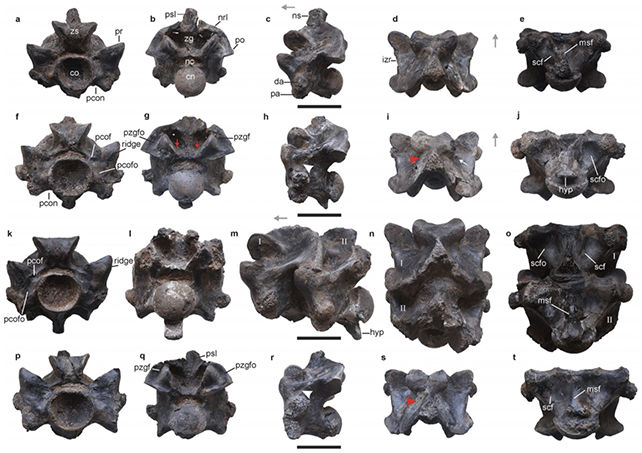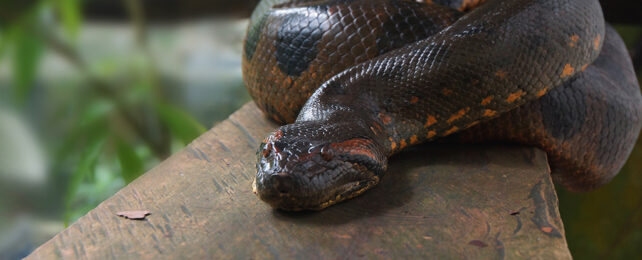A new analysis of fossilized vertebrae discovered in western India has revealed the existence of a giant snake species that may have measured some 11 to 15 meters (36.1 to 49.2 feet) in length when fully grown.
The researchers behind the work, from the Indian Institute of Technology Roorkee, acknowledge some uncertainty in their estimations, but they suggest the newly identified reptile they've named Vasuki indicus may have equaled the size of the largest snake in history, the Titanoboa, which died out some 58 million years ago.
Compared with snake species still slithering around today, V. indicus is way ahead. As far as verified measurements go, the longest living snake right now measures a paltry 7.67 meters.

Recovered from a fossil bed in the Naredi formation in the western Indian state of Gujarat, the remains would have been deposited in what was once a brackish lake or lagoon early in the Eocene, more than 40 million years ago.
Besides its astonishing length, the ancient snake can tell us more about the evolution of similar giant serpents. By assessing the size, shape and characteristics of the fossils, and comparing them to known species, the researchers have placed this snake in the now-extinct Madtsoiidae family.
"Here we report the discovery of a giant madtsoiid snake, one of the largest snakes ever reported, from an interval corresponding to a warm Middle Eocene period (~47 million years ago) of India," write the researchers in their published paper.
Geographer Debajit Datta and paleontologist Sunil Bajpai analyzed 27 vertebrae measuring up to 62.7 millimeters (2.5 inches) in length and up to 111.4 millimeters (4.39 inches) in width. The fossils, together with previous studies into ancient snakes, point to a broad, cylindrical body.
Based on the characteristics of the snake's backbone, it's unlikely that it spent much of its time in the water or the trees. V. indicus was most probably a slow-moving snake that caught its prey with ambushes, much like the anaconda, the researchers say.
From what we already know about ancient snakes and the lineages that connect them to today's species, the family that this snake belongs to most probably first emerged in India before spreading to Europe and Africa some 56-34 million years ago.
"Biogeographic considerations, seen in conjunction with its interrelationship with other Indian and North African madtsoiids, suggest that Vasuki represents a relic lineage that originated in India," write Datta and Bajpai.
Given the giant size of V. indicus, there's a strong possibility it lived in a relatively warm (28 °C or 82 °F) climate in this part of India, with higher temperatures meaning faster metabolic rates in cold-blooded reptiles.
It's not just a fascinating snake species discovery then, but also another data point for understanding the climate patterns of the ancient past. Everything considered though, we're glad this is a snake that we're never going to come across.
"Recovery of additional material and new taxa (including large-sized forms) may provide further insights into madtsoiid systematics and biogeography," Datta and Bajpai conclude.
The research has been published in Scientific Reports.
